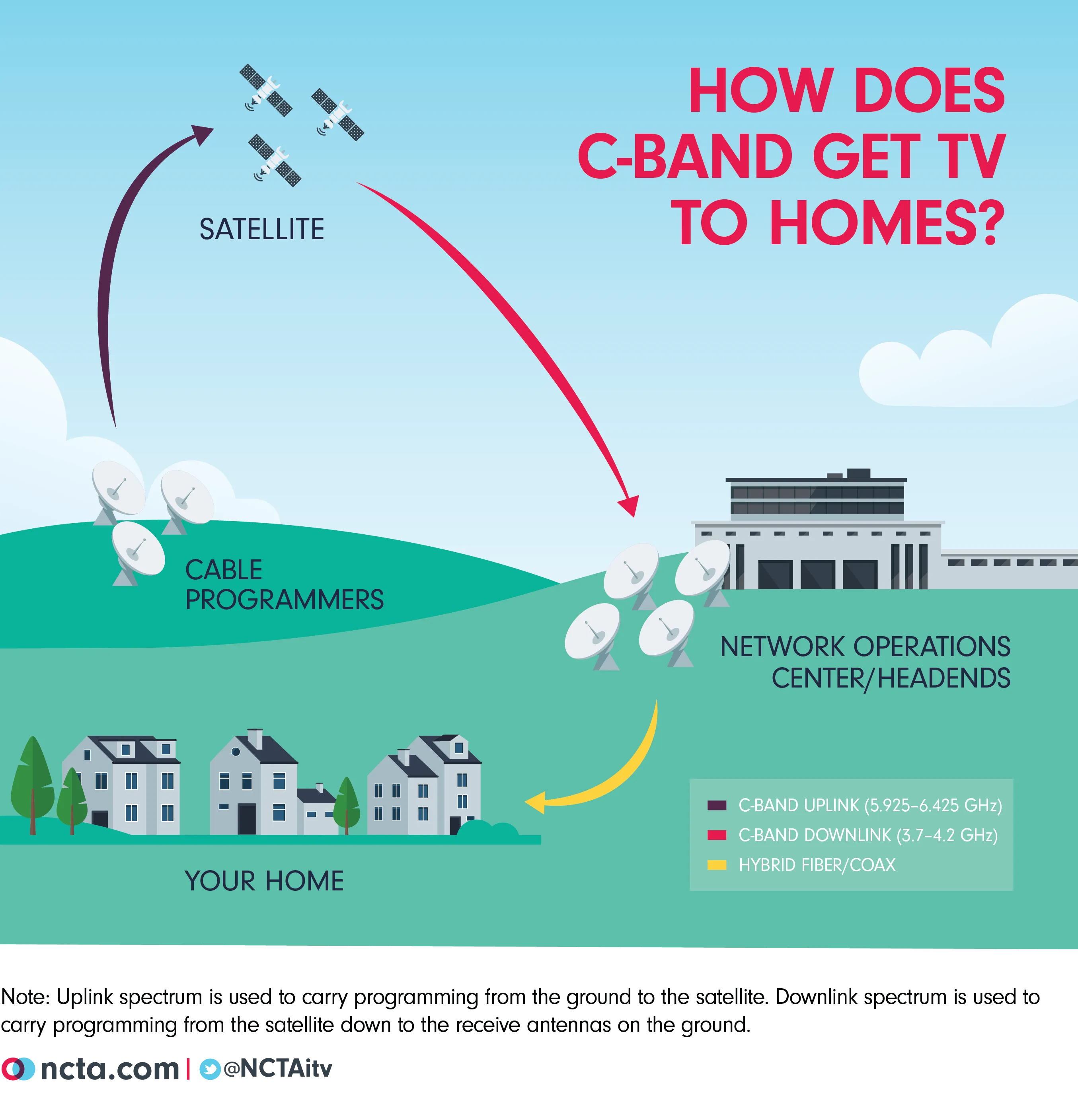Every day, more than 100 million consumers enjoy their favorite TV shows, musical acts and streaming media services delivered to them via a technology path that includes satellites that hover thousands of miles above us in the sky. These satellites are used to transmit all kinds of programming and digital content from one point to another. The key ingredient that enables these satellites to deliver this programming from a production facility to your cable operator, who sends it on to your home, is wireless spectrum called C-band.
But the FCC is currently considering a proposal that has the potential to disrupt how programming is transmitted via C-band, which could impact just about everyone who watches TV or listens to the radio. Needless to say, we have concerns about this proposal and want to ensure that no matter what actions the FCC takes, American consumers are able to receive seamless television service.
So What Is Going On?
With demand growing for more 5G spectrum, policymakers are exploring options for repurposing spectrum used for other services and dedicating it to 5G. One option under exploration is making available some or all of the 3.7-4.2 GHz band, referred to as C-band spectrum, for 5G. But cable operators and programmers, television and radio broadcasters, and broadband providers all use the C-band extensively today to provide important video, audio, and broadband services to Americans.
How Does C-band Work?
Today, TV programmers use part of the C-band to send your favorite news, entertainment, sports, and live events up to a satellite. Cable TV providers then receive that content by way of satellite dishes or “earth station antennas” located at network operations centers and cable headends across the country using the 3.7-4.2 GHz band. That content makes its way to your television via a hybrid fiber-coaxial network (see graphic below). In addition to television distribution, some cable operators–like GCI in Alaska–rely on C-band spectrum to deliver broadband connectivity to remote, hard-to-reach areas, making services like telehealth, long-distance learning, and even emergency communications a reality for rural customers in Alaska.
To continue providing more than 100 million American households with reliable access to television programming, and to continue to deliver broadband to remote areas, providers need to retain access to sufficient C-band spectrum and be protected from harmful interference from new users in the band.

What Are the FCC’s Plans for C-Band and How Can It Protect Existing Users?
The FCC is considering various proposals to make some or all of the C-band currently used for video, audio, and broadband delivery available for 5G. Accommodating any new service—whether through sharing or relocation of existing services—will result in disruption and impose costs on existing service providers. Some key questions in this area still need to be answered. Outstanding questions include just how much spectrum will remain available to support today’s C-band services, what changes current users will need to make to their operations to accommodate new 5G entrants, and how much it will cost to transition some C-band satellite spectrum to 5G use.
Some have proposed that today’s C-band services could be transitioned to alternative transmission mechanisms—fiber and higher frequency satellite bands—but these replacements are inadequate because they cannot provide the same ubiquitous, reliable, and cost-effective delivery that C-band offers. Accordingly, the FCC should ensure that enough spectrum remains available to accommodate all of today’s C-band operations.
Even if the FCC authorizes 5G mobile use of just a portion of C-band spectrum, with C-band operations continuing next door, this would require installation of a filter on every single one of the thousands of C-band antennas used today. This proposal would impose significant costs of current providers which is why the FCC should ensure that a transparent, complete process is in place to reimburse the costs that current users incur in any transition.
Finally, anytime the FCC introduces new radio services alongside existing operations—in the same or adjacent bands—this presents a risk of harmful interference. The FCC should establish rigorous technical rules designed to prevent such interference.
We support the FCC’s efforts to make available more spectrum to support the growing demand for wireless broadband. But spectrum bands with thriving ecosystems already in place that provide important services to American consumers require special consideration. That is why policymakers should ensure that new spectrum policy approaches in the C-band do not undermine existing users’ ability to continue serving their customers, and that existing users are compensated for any costs they incur to accommodate new 5G operations.









